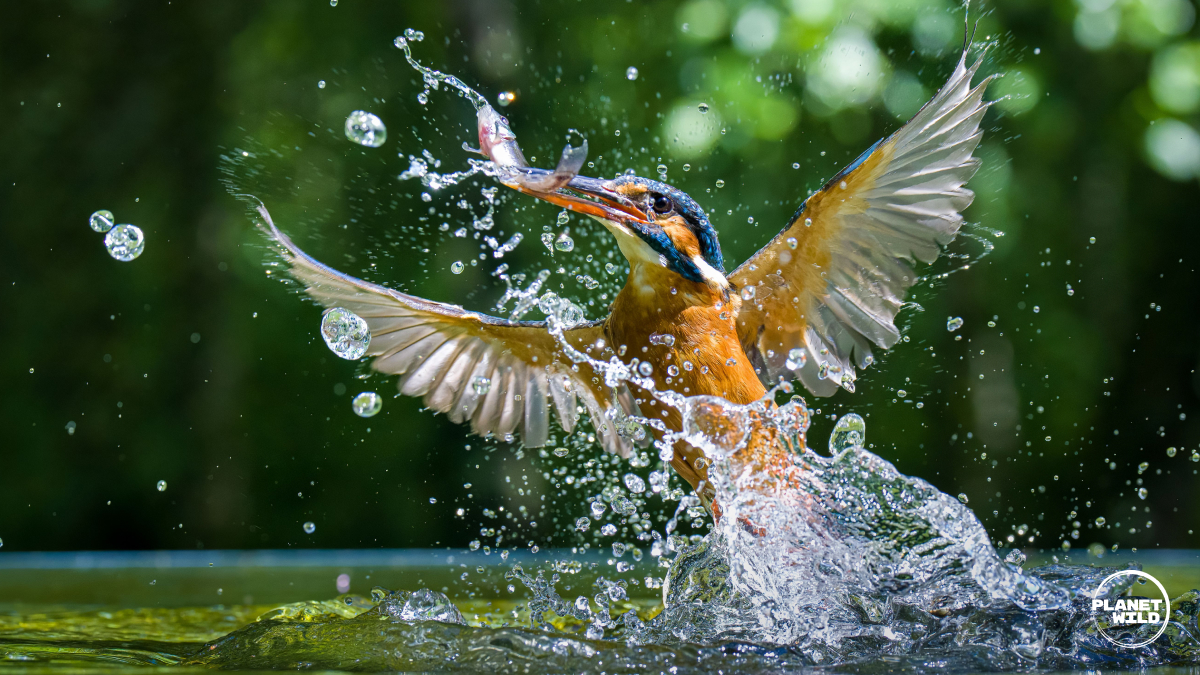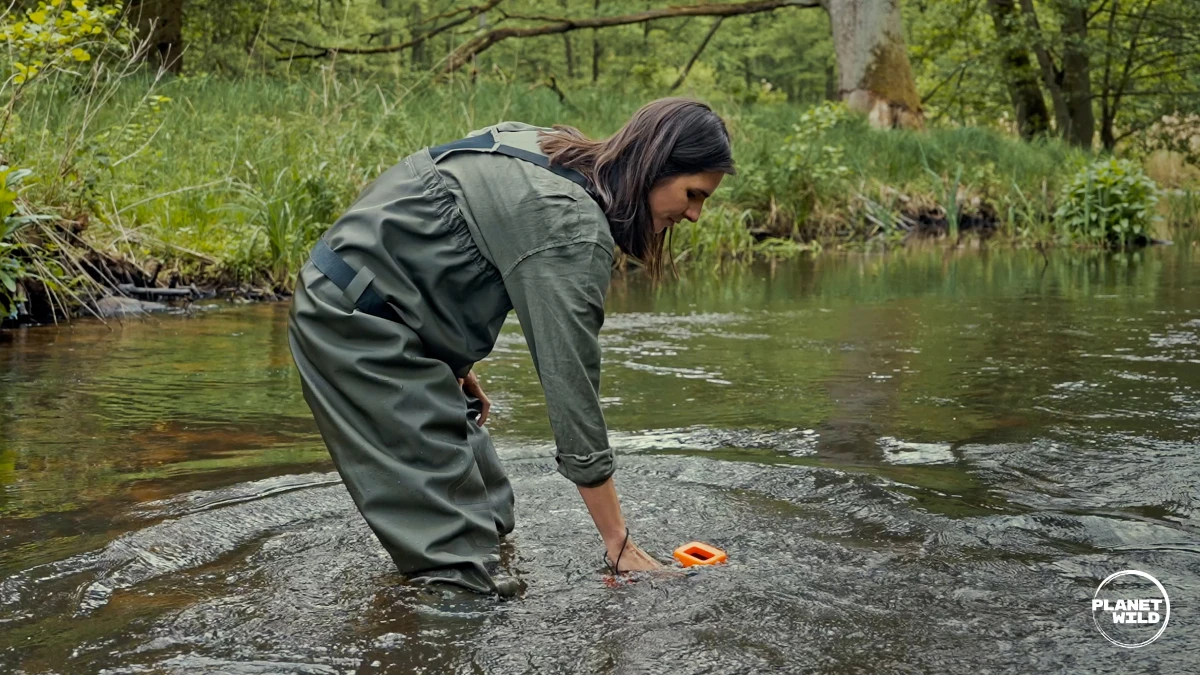River Rewilding: How we can save our waterways

Protecting our planet’s ecosystems is now more critical than ever. Ecosystems support a wealth of biodiversity vital for life on Earth. When just one of those species becomes extinct or endangered, it can have an enormous impact on thousands of others.
Unfortunately, we are the reason biodiversity everywhere is under threat, making it even more important to protect what’s left. Rewilding is one way we can do this.
Rewilding heals ecosystems by letting nature take care of itself. It has the power to protect species from extinction and even restore entire lost ecosystems. This is done by reintroducing native plants or animals to an area damaged by human activity, and then letting nature do its thing. By returning certain species to their ecosystems we may be able to impact biodiversity in a meaningful way.

Why are rivers vital to biodiversity?
Water is one of the major ingredients for all life on Earth. Every drop we need is connected to a river system. This fact should be reason enough to protect our water supply, but rivers have an even bigger impact on the plants and wildlife that rely on them.
- Rivers are biodiversity hotspots. Nutrients and minerals travel thousands of miles along river systems. They form the base of the food chain for a variety of species including birds, fish and other aquatic life.
- Rivers are our primary source of freshwater. Around the world water from rivers, lakes and groundwater flows from intake points into treatment plants before it’s pumped into our homes. Billions of plants and animals also rely on freshwater from rivers to survive.
- Rivers help regulate ground erosion. This is done by moving sediment and redistributing it along their banks. This helps prevent excessive soil erosion, maintains the stability of riverbanks, and carves out landscapes.
- Rivers act as natural drainage systems. They carry excess water away from flood-prone areas and towards the ocean. Healthy rivers can even absorb and store water which reduces the risk and impact of flooding.
- Rivers are key transport hubs. For many communities, rivers provide a vital lifeline for trade, travel and tourism. They also contribute to the economy through hydropower generation, agriculture, and tourism.
- Rivers help regulate our climate. They influence rainfall patterns and temperature in surrounding areas thanks to their important role in the water cycle.
- Rivers also play an important role in the global carbon cycle. A recent study by CREAF postdoctoral researcher Lluis Gómez Gener found rivers around the world absorb around 3.2 billion tons of carbon per year. When they’re disrupted by human activity, their ability to remove carbon dioxide from the atmosphere decreases.

While rivers are key building blocks for healthy life on Earth, many are in trouble. Even the world’s most beloved and famous rivers are struggling. The Amazon basin is facing huge challenges from extensive deforestation and dam-building. This is impacting fish migration and stopping vital nutrients from moving around the river system. The same goes for Egypt’s Nile. Half a billion people depend on the Nile for survival, and yet it’s been polluted and exploited for decades. In Europe, the mighty Danube contains some of the highest concentration of chemical waste anywhere on the continent.
River rewilding can turn the tide
In the southern Netherlands, Europe’s largest river rewilding and restoration project is currently underway. The project along 50km of the Meuse River floodplain hopes to undo 500 years of damage caused by farming and engineering. This is done by re-landscaping large areas; lowering parts of the riverbank and widening others to make way for local flora and fauna to return. The result has been tremendous, with older parts of the restored river already teaming with life. Otters, wolves, free-roaming cows, horses and a variety of birdlife have returned to the floodplain.
While flooding has a bad reputation for damaging property and causing destruction, it’s actually a vital process for some river ecosystems. When rivers flood they create islands and channels which become new homes for various wildlife. Flooding also helps flush out invasive species that may have taken up residence. It can also help spread nutrients to lakes and rivers, which help restore river systems across thousands of miles.
The Meuse project is a decades-long undertaking. Big river rewilding projects like this demonstrate how successful the process can be in turning back the clock on human impact. Furthermore, the benefits extend to our economic well-being. The Meuse region now attracts two million visitors a year with ecotourism.

Rewilding the Oder River
Home to a “jigsaw” of interconnected habitats, the Oder River experienced a devastating environmental catastrophe in 2022. Millions of dead fish washed up on the river’s banks, prompting an investigation into what exactly had happened. Satellite data later confirmed that a massive toxic algae bloom was responsible. The bloom had been caused by salt discharge from nearby industry.
The river was the focus area for the reintroduction of Baltic sturgeon; the fish responsible for producing caviar. Sturgeons are the most endangered species group on Earth. They were once native to the Oder and nearby Elbe rivers, but struggled to survive because of river development, overfishing and migration obstacles. The last time a mature sturgeon was caught in the Elbe was back in 1985, and it’s been almost 30 years since one was captured in the North Sea.
In an attempt to reintroduce the sturgeon to the region, a number of the fish were released back into the river. It was hoped they would stay in the Oder for up to three years before migrating to the Baltic. Then the disaster struck, creating a major setback for the reintroduction program. Hundreds of dead juvenile sturgeon were discovered on their way to the ocean, with no idea how many managed to survive.

However, the Oder River is fighting back — with the help of Rewilding Europe. They are working to restore and better connect a variety of ecosystems in and around the Stettin Lagoon. Sections of the river and its banks are being restored, floodplains reconnected and obstacles removed to aid fish migration.
Thanks to the support from our members, Planet Wild was able to support rewilding projects in the Ina River – one of the tributaries that leads into the Oder. By simply replenishing the riverbeds here with gravel, the Ina can offer a lifeline to the struggling Oder. This one action has a huge impact on surrounding biodiversity. Here are some examples:
- Gravel creates the perfect breeding ground for many fish species (incl. salmon and trout). It provides shelter for spawned eggs and baby fish.
- Streams are able to absorb more oxygen as the gravel makes the water less turbulent.
- This action protects rivers from destructive currents and erosion. The gravel makes the riverbeds more shallow, so the rivers can overflow naturally.
- The natural flooding of meadows and forests provide new habitats for plants and animals. These wetlands also serve as feeding grounds for birds (including the King Fisher) who have now returned to the region.
- Shallower riverbeds allow large mammals to cross the river, improving and repairing migration routes.
Learn more about the benefits of river rewilding in our latest mission video!
Rewilding: Barriers to overcome
So if rewilding can have such a massive impact on biodiversity, why is it not as popular as other conservation methods? There are a few reasons.
Rewilding initiatives need careful consideration before they can be put into action. The process often involves reintroducing keystone species or predators to restore balance and heal ecosystems. However, predicting and managing these complex interactions can be challenging. You have to consider any unintended consequences such as changes in animal populations.
Rewilding also takes time, and there is no finish line or end date. Its success largely relies on continuous monitoring over extended periods. This can be resource-intensive and requires a lot of collaboration.

Large rewilding projects can come into conflict with human interest. Land ownership and resource management can pose a challenge for conservationists. To make way for the Meuse river rewilding project, dozens of dams were removed and 50 homes were relocated, including 10 farms. Concerns over conflicts with agriculture, livestock or tourism can lead to opposition and make it difficult to gather public support.
Having said all this, the human benefit of successful rewilding is enormous, and in many cases outweighs the concerns. Rewilding projects help us reconnect with nature, heal broken landscapes and provide us with an array of ecological benefits. These include cleaner air and water, better soil fertility, natural flood control and better protection against climate change.
About Planet Wild
Planet Wild is committed to rewilding the planet through monthly missions that work directly with grassroots organizations dedicated to fighting the biodiversity crisis. When you become a Planet Wild member, your contribution will directly fund innovative and exciting projects all over the world, so you can make a difference from home. Learn more about what we do here.